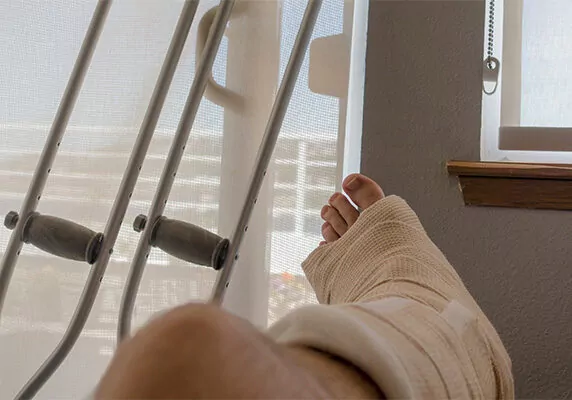Renting an apartment or home can be a great experience. Many landlords, property managers, and apartment complexes are welcoming, care about their tenants, and stay on top of building upkeep. Unfortunately, not all renting experiences are so great—lawsuits against landlords or apartment buildings are fairly common. Some landlords and property managers are not diligent about ensuring safe conditions at their properties, which can lead to tenant and/or guest injury.
To obtain compensation for an injury sustained at a rental property, you must prove that the owner or manager of the rental property or apartment complex was negligent.
Most often, an injury victim will argue that they were injured because the landlord was careless or negligent with regard to the safety of the rental property. This is sometimes referred to as a “duty of care,” which a landlord must provide. Landlords must ensure that their property is reasonably safe—if a landlord or apartment complex fails to act reasonably to prevent injury, and an injury does occur, you may have legal grounds for a lawsuit.
The court may evaluate a number of factors to determine if the landlord was negligent, including if the landlord owed you a duty of care and if they breached such duty. Among the other factors a court might consider:
Prior knowledge of unsafe living conditions. Sometimes dangerous or unsafe living conditions are “open and obvious,” which means the landlord may not be required to point them out to tenants, even though it is best practice to do so.
Likelihood of serious injury. Courts might be more likely to find a landlord responsible for tenant injury if they did not take precautions to ensure their property is safe. For example, a loose staircase banister presents a clear danger which could lead to injuries, which could be mitigated by a simple correction. Clear dangers should be fixed, or landlords may be responsible for injuries.
Feasibility of mitigating risks. A landlord is responsible for mitigating risks. Courts may find landlords liable for tenant injuries when a simple, reasonably priced precaution would have eliminated the dangerous condition. For example, an unexpected step leading to the garage could lead to a trip and fall. A landlord can mitigate the risk by painting a reflecting strip across the step. If the risk of harm greatly outweighs the burden of mitigation, a court might find the landlord liable for injuries.
Because each personal injury lawsuit entails unique details, these factors may or may not be considered in your case. A court will likely consider the totality of your case based on the factors that lead to your injury.
Comparative negligence and contributory negligence place some or all of the fault on the injured party, not the landlord.
Even when a landlord’s inaction to mitigate risks meets all the elements of negligence, the tenant’s behaviour could also be a central cause of the injury. For example, if a tenant with untied shoes trips over a broken step, a court could find that the tenant is partially negligent for not tying their shoes.
In situations in which tenants are partially to blame for their injuries, courts can assess comparative or contributory negligence to allocate liability.
Comparative fault assigns blame to both the landlord and the tenant. The courts or jury will apportion the fault according to percentage. For example, if a jury awarded $100,000 dollars and found that the plaintiff or tenant was 90% at fault, then the plaintiff would recover 10% of the verdict or $10,000. However, many times in California the plaintiff can recover 100% of the special damages (such as medical costs) even if they are found the majority at fault.
Contributory negligence is based on percentage of fault. If you, as a tenant, are found to be more than 50 percent at fault then you more than likely will recover nothing
It is clear that landlords are held to a high standard of care. If they do not provide a reasonably safe environment, and a tenant or visitor becomes injured, they may be held liable and required to pay compensation. If you are moving into a rental property, be sure to discuss property safety with your landlord. They should apprise you of any potential dangers, and should also repair any clear dangers to mitigate the risk of injury.
If you were injured while living at or visiting a rental property, contact the lawyers at Penney & Associates! We offer free consultations. Our personal injury lawyers are ready to discuss the facts of your case today.



